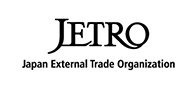Plunkett’s Food Industry Market Research
Competitive Intelligence, Business Analysis, Forecasts, Market Size, Trends, Companies, Statistics
Available Data Services: Custom Research Projects, Database Subsription or PDF eBooks
PLUNKETT PROVIDES IN-DEPTH STATISTICS TABLES COVERING THE FOLLOWING INDUSTRY TOPICS:
-
Global Food Industry Statistics and Market Size Overview
-
U.S. Food Industry Statistics and Market Size Overview
-
Food Sales, U.S.: 2013-2017
-
Food Sales, U.S.: 2020-September 2023
-
Changes in Food Price Indexes, U.S.:2017-2019
-
Income Statement for U.S. Farm Sector: 2019-2023
-
Gross Output in the Food & Beverage & Tobacco Product Manufacturing Industries, U.S.: Selected Years, 2013-2019
-
Retail Prices for Beef, Pork, Poultry Cuts, Eggs & Dairy Products, U.S.: July 2018-January 2019
-
Value Added to the U.S. Economy by the Agricultural Sector via the Production of Goods & Services: 2018-2023
-
Meat Supply & Use, U.S.: 2017-2028
-
Summary of U.S. Agricultural Trade Projections: Fiscal Years 2020-2031
-
Egg Supply & Use, U.S.: 2017-2028
-
Total U.S. Agricultural Commodity Exports & Imports, Top Ten Countries: 2018-Febraury 2023
-
Food Industry Employment, U.S.: 2018-October 2023
-
Poultry & Eggs Production, Use, Prices & Trade, U.S.: 2016-2019
-
Dairy Production & Prices, U.S.: 2016 - January 2019
-
Food Preparation and Serving Related Employment and Wage Estimates by Occupation, U.S.: May 2022
-
Horticultural Crops, Baseline Projections, U.S.: 2016-2027
-
World Supply & Utilization of Major Crops:2021-2024
-
Fruit Production, Per Capita Consumption, Retail Prices & Grower Returns, U.S.:2008-2017
-
World Supply & Utilization of Major Animal Products: 2019-Oct 2024
-
Planted & Harvested Acreage for Major Field Crops, Baseline Projections, U.S.: 2017-2028
-
Cost of Production Forecasts for U.S. Corn, Soybean, Wheat & Cotton Crops:2018-2019
-
Cost of Production Forecasts for U.S. Rice, Peanuts, Sorghum, Oats & Barley Crops: 2018-2019
-
Global Area of Biotech Countries: 2019
-
Farm Sector Cash Receipts from Sales of Agricultural Commodities, U.S.: 2013-2018
-
Farm Sector Production Expenses, U.S.: 2013-2018
-
Direct Government Payments to U.S. Farms: 2015-2021
-
Average Farm Operator Household Income & Assets, U.S.: 2016-2021
-
Federal R&D & R&D Plant Funding for Agriculture, U.S.: Fiscal Years 2021-2023
-
Farm Receipts, Expenses & Income, Baseline Projections, U.S.:2017-2028
-
Value of U.S. Agricultural Exports & Imports by Commodity Group: 2013-November 2018
Top Companies Profiled
The following is a partial listing for this industry. As a subscriber, you will have access to the leading companies and top growth companies. This includes publicly-held, private, subsidiary and joint venture companies, on a global basis as well as in the U.S.
Hundreds of Top Companies Profiled, Including:
PLUNKETT PROVIDES UNIQUE ANALYSIS OF THE FOLLOWING TRENDS THAT ARE DRIVING THIS INDUSTRY:
-
Introduction to the Food & Beverage Industry
-
ALDI Scores Big Market Share in the U.S., UK and Europe with its Discount Supermarkets and Aggressive Investment/Walmart Dominates Grocery Retailing
-
The Globalization of the Food Industry/Brazilian Firms Acquire Major U.S.-Based Food Producers
-
The State of the Food Industry Today
-
The Coronavirus’ Effect on the Food & Beverage Industry
-
Genetically Modified (GM) Seeds and Crops/R&D Investment Is High
-
Genetically Modified (GM) Ingredients in Processed or Packaged Foods
-
Cloning of Farm Animals/Meat and Cheese Substitutes Created in Laboratories
-
Selective Breeding, Zinc Fingers and Mutagenesis as Alternatives to GMOs
-
Obesity Sparks Government Action/Snack Foods Get Healthier
-
Comparing Major Diet Food and Weight Loss Companies
-
Organic Food Sales Continue Global Growth/Locally Sourced Foods and Farm to Table Increase in Popularity
-
Childhood Obesity Brings About Changes in Marketing/Federal Program Targets Children
-
Food Labeling Gets Further Federal Backing/Wal-Mart Institutes New Food Label Program
-
McDonald’s Scrambles to Adapt to New Consumer Tastes
-
Gluten-Free Foods Continue Rapid Growth
-
Manhattan’s FreshDirect sets the Pace in Grocery Sales Over the Internet
-
Functional Foods Promise Health or Nutritional Benefits
-
Grubhub, DoorDash and Others Deliver Restaurant Meals to Customers’ Homes and Offices
-
Agriculture Technologies (AgTech) and Irrigation Market Grows Worldwide/Hi Tech Greenhouses Become Commercial
-
Drones Provide New Tools for Precision Agriculture
-
Aquaculture Gains Major Fish Supply Market Share
-
Food Safety Becomes a Massive Consumer, Industry and Regulatory Issue
-
Packaging Technology Improves/Wal-Mart and Coca-Cola Boost Packaging Sustainability
-
Retail Technologies Advance for Store Checkout and Restaurant Orders/Apps and Location-Based Ads Drive Sales
-
Retail Technologies Advance for Restaurant Orders
-
RFID Drives Inventory Management Evolution
-
Wal-Mart Still Dominates But Faces Slowing Revenue Growth
-
Food & Commodity Prices Are a Major Global Problem for Consumers & the Food Industry Overall
-
Private Label Brands Grow in Share of Total Store Sales
-
Consumers Drive a Revolution in the Food Industry, Demanding Fresher, More Natural Foods, Creating both Pain and Opportunities for Companies
-
Soft Drinks’ Market Share Declines while Bottled Water Sales Soar
-
Food Waste on the Rise/Recycling Efforts Underway
-
Wages for Restaurant, Hotel and Hospitality Workers Cause Controversy
-
Fast Food Faces Stiff Competition from Casual Dining Restaurants (Fast Casual)
-
Food Trucks Serve Busy Urban Diners, Introduce New Chefs
-
K-Cups and Single Serving Systems Soar/Shift from Coffee Sector to Soft Drinks as Consumers Continue to be Willing to Pay for Convenience
-
Meal Kits Soar in Sales, Making it Easy to Prepare Home-Cooked Meals Without Shopping at Supermarkets
-
Craft/Microbreweries Proliferate
-
The Future of the Food Industry, Agriculture, Food Demand, Supermarkets and Online Food Retailing
Key Findings:
A complete market research report, including forecasts and market estimates, technologies analysis and developments at innovative firms within the Food Industry. Gain vital insights that can help shape strategy for business development, product development and investments.
Key Features:
-
Business trends analysis
-
In-depth industry overview
-
Technology trends analysis
-
Forecasts
-
Spending, investment, and consumption discussions
-
In-depth industry statistics and metrics
-
Industry employment numbers
Additional Key Features Include:
Industry Glossary
Industry Contacts list, including Professional Societies and Industry Associations
Profiles of industry-leading companies
-
U.S. and Global Firms
-
Publicly held, Private and Subsidiaries
-
Executive Contacts
-
Revenues
-
For Public Companies: Detailed Financial Summaries
- Statistical Tables
Key Questions Answered Include:
-
How is the industry evolving?
-
How is the industry being shaped by new technologies?
-
How is demand growing in emerging markets and mature economies?
-
What is the size of the market now and in the future?
-
What are the financial results of the leading companies?
-
What are the names and titles of top executives?
-
What are the top companies and what are their revenues?
This feature-rich report covers competitive intelligence, market research and business analysis—everything you need to know about the Food Industry.
Plunkett Research Provides Unique Analysis of the Following Major Trends and Technologies Affecting the Food Industry
-
Introduction to the Food Industry
-
The State of the Food Industry Today
-
Genetically Modified (GM) Seeds and Crops Planted in Dozens of Nations/Agribio R&D Investment Is High
-
Genetically Modified (GM) Foods Prompt Controversy, Labeling and Legislation
-
Plant-Based Meat Substitutes Developed
-
Selective Breeding, Mutagenesis and Gene-Editing, Including CRISPR, as Alternatives to GM Seeds
-
Obesity Sparks Government, School and Corporate Initiatives/Snack Foods Get Healthier
-
Organic Food Sales Continue Global Growth/Locally Sourced Foods and Farm to Table Increase in Popularity
-
McDonald’s and Other Fast Food Companies Reposition to Adapt to New Consumer Tastes and Robotics
-
Demand for Home Grocery Delivery Service Such as Instacart and Amazon Fresh Soars
-
Grubhub, DoorDash and Others Deliver Restaurant Meals and Household Items to Homes
-
Precision Agriculture Technologies (AgTech), Farm Robotics, GPS and Irrigation Market Grows Worldwide/Hi Tech Greenhouses
-
Drones Provide New Tools for Precision Agriculture
-
Aquaculture Gains Major Fish Supply Market Share
-
Packaging Technology Improves/Walmart, Amazon and Coca-Cola Boost Packaging Sustainability
-
Retail Technologies Advance for Restaurant Online Ordering, along with Robotics and Automation
-
RFID Drives Inventory Management Evolution
-
Walmart Still Leads the Retail Industry, but Invests in Web Presence to Battle Amazon
-
Private Label Brands Grow in Share of Total Store Sales
-
Consumers Drive a Revolution in the Food Industry, Demanding Fresher, More Natural Foods, Creating both Pain and Opportunities
-
Food Recycling Efforts Underway
-
Wages Rise for Restaurant, Hotel and Hospitality Workers
-
Fast Food Faces Stiff Competition from Casual Dining Restaurants (Fast Casual/ Fast Fine)
-
Food Trucks Enjoy a Boom
-
Meal Kits from Firms like Blue Apron Make It Easy to Prepare Home-Cooked Meals
-
Craft/Microbreweries Proliferate
-
ALDI Scores Big Market Share in the U.S., UK and Europe with its Discount Supermarkets and Aggressive Investment/Walmart Dominates Grocery Retailing
-
The Future of the Food Industry, Agriculture, Food Demand, Supermarkets and Online Food Retailing
Plunkett Research Provides In-Depth Tables for the Following Food Industry Statistics
-
U.S. Food Industry Statistics and Market Size Overview
-
Global Food Industry Statistics and Market Size Overview
-
Food Sales, U.S.: 2020-September 2023
-
Income Statement for U.S. Farm Sector: 2019-2023
-
Federal R&D & R&D Plant Funding for Agriculture, U.S.: Fiscal Years 2021-2023
-
Value Added to the U.S. Economy by the Agricultural Sector via the Production of Goods and Services: 2018-2023
-
Summary of U.S. Agricultural Trade Projections: Fiscal Years 2020-2031
-
Total U.S. Agricultural Commodity Exports & Imports, Top Ten Countries: 2018-February 2023
-
Food Industry Employment, U.S.: 2018-October 2023
-
Food Preparation and Serving Related Employment and Wage Estimates by Occupation, U.S.: May 2022
-
World Supply & Utilization of Major Crops: 2021-2024
-
World Supply & Utilization of Major Animal Products: 2019-Oct 2024



















